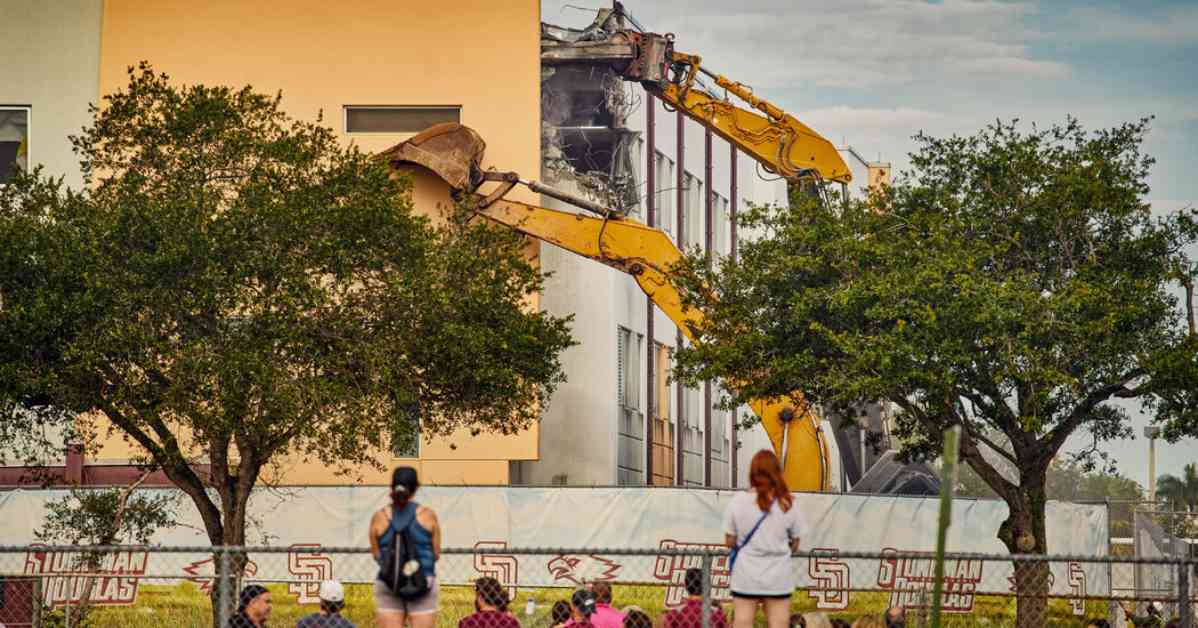The former freshman building at Marjory Stoneman Douglas High School, which had been preserved as a crime scene since the tragic attack on February 14, 2018, is now being demolished. This building, where 17 people lost their lives in one of the deadliest school shootings in American history, is finally being torn down six years after the heartbreaking event.
The demolition process started on Friday and is expected to take a few weeks to complete. Instead of using explosives, workers are dismantling the three-story building piece by piece, beginning with the roof and top floor. Relatives and friends of the victims, as well as school staff, were present at a designated viewing area near the building to observe the start of the demolition. Onlookers and journalists also gathered across the street to witness this significant moment.
Lori Alhadeff, who tragically lost her 14-year-old daughter Alyssa in the shooting, expressed her readiness to see the former freshman building come down. Her 17-year-old son currently attends Stoneman Douglas High School, and she believes that demolishing the building is a necessary step towards moving forward from the tragedy.
The decision to demolish the building has sparked mixed emotions within the community. While some see it as a positive step towards healing and closure, others are concerned that removing the building will cause people to forget the victims and the impact of the tragedy. For many, the building has served as a symbol of failure and a painful reminder of the lives lost on that fateful day.
As the demolition continues, it is important to remember and honor the memory of those who lost their lives in the Parkland school shooting. While removing the physical structure may signify progress and change, the emotional scars left by the tragedy will remain for the survivors, families, and the community as a whole. The demolition of the former freshman building is a significant moment in the healing process, but it is essential to continue supporting those affected by the tragedy and working towards preventing such devastating events in the future.




